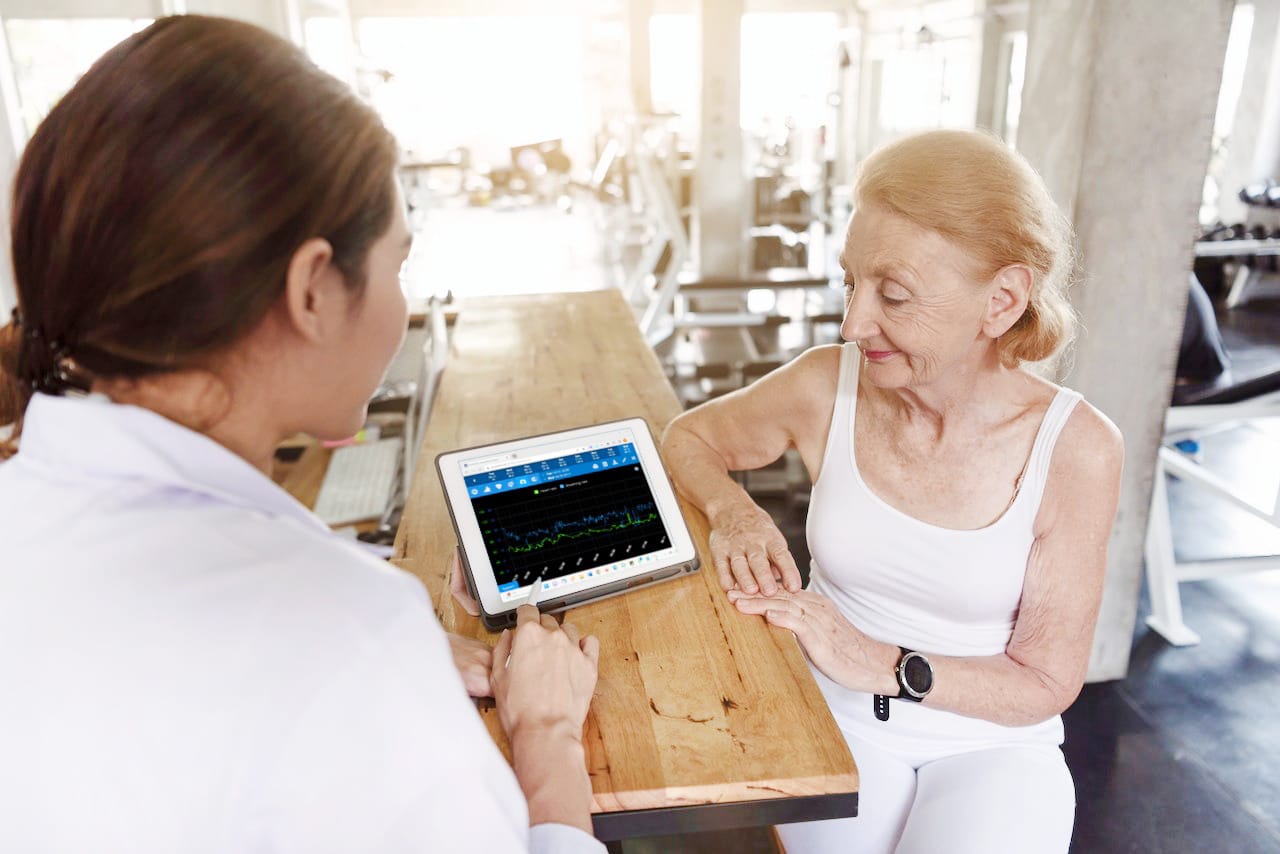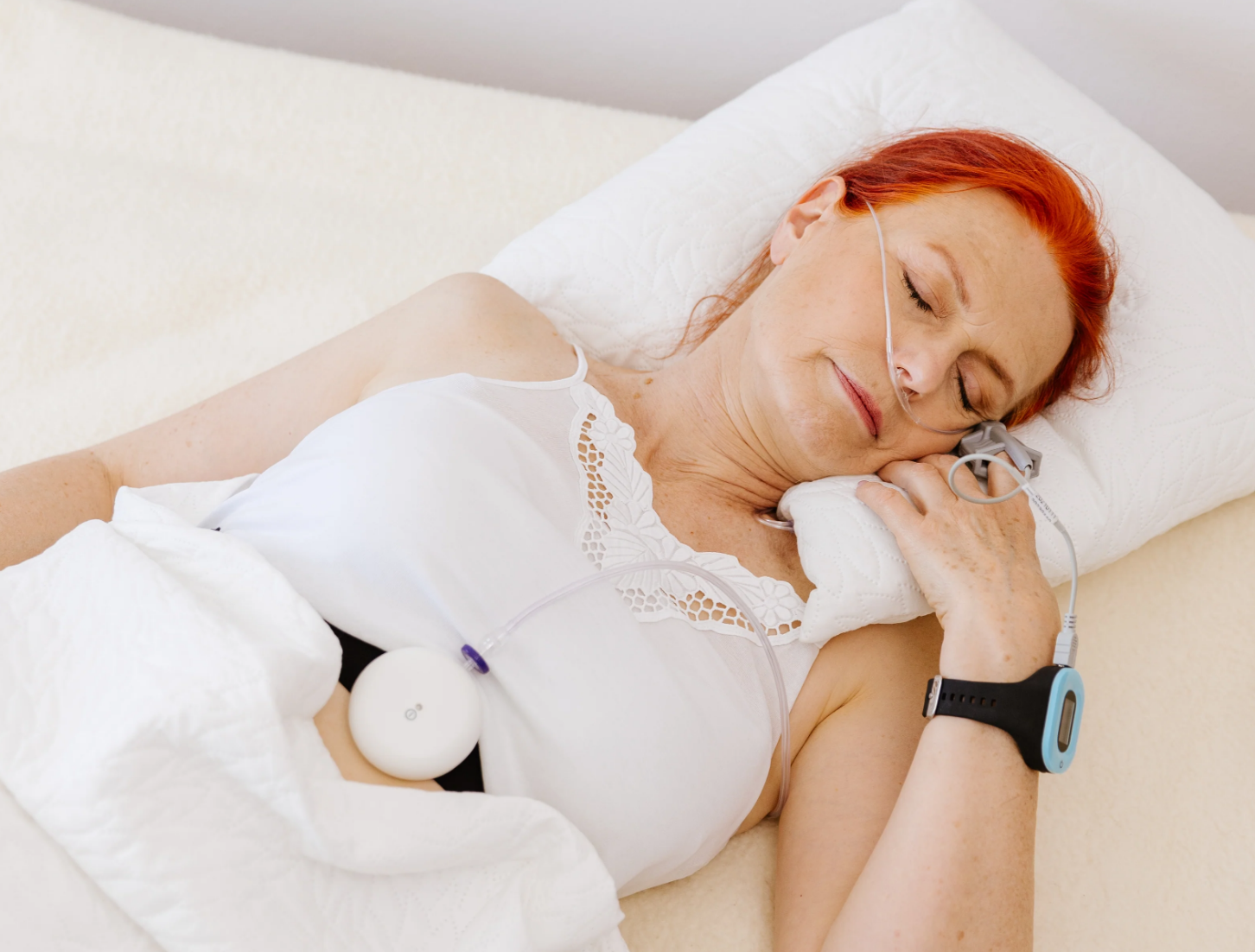Introduction
In recent years, the importance of researching sedentary behavior and physical activity has become increasingly clear. With growing evidence of the adverse health effects of sedentary time and the benefits of regular physical activity, researchers and clinicians are focusing on understanding these behaviors to develop effective interventions. However, to create impactful interventions, it is crucial to obtain accurate measurements of both sedentary behavior and physical activity. This not only ensures validity and reliability but also helps tailor interventions to individual needs.
Measuring sedentary behavior and physical activity has its challenges. Traditionally, self-report methods, such as questionnaires, have been used to measure physical activity. While these tools can provide valuable information, they are limited by biases, such as recall errors and social desirability. Objective measurement tools, like accelerometers, offer a more accurate and reliable means of assessing sedentary behavior and physical activity. These devices, which are increasingly being used in both research and clinical settings, have been shown to provide a more accurate picture of individuals’ activity levels and sedentary time.
In this article, we will discuss the role of accurate measurement in understanding sedentary behavior and physical activity, as well as the implications for research and intervention design. We will also explore the various measurement technologies available, including accelerometers, pedometers, heart rate monitors, and multi-sensor devices. These technologies not only provide valuable data for researchers and clinicians but can also be used to tailor interventions to the specific needs of different populations, such as children and adolescents, older adults, and special populations.

As an experienced researcher, our aim is to provide you with a comprehensive understanding of the importance of accurate measurement in sedentary behavior and physical activity research and interventions. Furthermore, we will delve into the practical applications of measurement technologies in various settings, such as occupational activity and clinical settings.
Our company is committed to offering cutting-edge measurement technologies that can help researchers and clinicians improve their understanding of sedentary behavior and physical activity. By providing accurate and reliable data, these tools can play a pivotal role in developing effective interventions to promote healthier lifestyles and mitigate the risks associated with sedentary behavior. We invite you to explore our range of products and services, and discover how they can enhance your research and interventions, ultimately leading to better health outcomes for your target populations.
Understanding Physical Activity and Sedentary Behaviour
Defining Sedentary Behavior and Physical Activity
Before we delve into the importance of accurate measurement, it is essential to understand the definitions of sedentary behavior and physical activity. Sedentary behavior refers to activities with low energy expenditure that involve sitting or lying down, such as watching television, working on a computer, or reading. In contrast, physical activity encompasses any bodily movement that requires energy expenditure, including walking, running, swimming, and even household chores.
Understanding the balance between physical activity and sedentary behaviour is crucial, as they each have unique implications on health. While both behaviors coexist, they should not be viewed as opposites on a single spectrum. Instead, it is essential to measure sedentary behavior and physical activity separately to develop targeted interventions that address both aspects.
Health Risks and Benefits
The health risks associated with sedentary behavior have gained increasing attention in recent years. Research has shown that prolonged periods of inactivity can lead to various health problems, including obesity, type 2 diabetes, cardiovascular diseases, and some cancers. Furthermore, a sedentary lifestyle can have negative effects on mental health, such as increased risk of depression and anxiety. On the other hand, regular physical activity has numerous health benefits, including weight management, improved cardiovascular health, better mental health, and a reduced risk of chronic diseases.

Given the significant impact of sedentary behavior and physical activity on health, targeted interventions are essential to improve overall well-being. Accurate assessment of physical activity and sedentary behavior can help researchers and clinicians identify the specific needs of different populations and develop tailored interventions. For instance, older adults may benefit from interventions that promote low-impact activities, while children and adolescents may require strategies that encourage active play and reduce screen time.
In addition to the traditional measurement methods, such as questionnaires, innovative approaches like ecological momentary assessment (EMA) are gaining popularity in the field of physical activity and sedentary behavior research. EMA involves real-time monitoring of individuals’ behavior in their natural environment, providing valuable insights into the context and patterns of activity and inactivity.
By understanding the health risks and benefits associated with sedentary behavior and physical activity, researchers and clinicians can develop evidence-based interventions that promote healthier lifestyles. Accurate measurement tools play a crucial role in this process, as they provide the necessary data to inform intervention design and evaluation. Our company offers a range of cutting-edge measurement technologies to support your research and clinical practice, helping you make a tangible impact on the health and well-being of your target populations.
To learn more about the importance of measuring sedentary behavior and physical activity, explore our articles on health implications, measurement methods and tools, and emerging technologies. Additionally, check out our resources on specific populations and occupational activity to further enhance your understanding of this vital area of research and practice.
Methods for Accurate Measurement of Sedentary Behavior and Physical Activity
Self-Report vs. Objective Measurement Tools
When studying sedentary behaviors and physical activity, it is crucial to choose the right measurement methods. Traditionally, self-report methods, such as interviews and physical activity questionnaires, have been widely used. However, these methods have limitations, including recall bias, social desirability bias, and difficulty in accurately estimating intensity and duration. As a result, there has been a shift towards using objective measurement tools, which offer more accurate and reliable data for activity research.
Objective measurement tools provide a more precise assessment of sedentary behavior and physical activity by recording data directly from the individual’s body. These tools are less prone to biases, can record data continuously, and often provide detailed information about the intensity and duration of activities.

Types of Objective Measurement Tools
Several objective measurement tools are available for researchers and clinicians to measure physical activity and sedentary behavior. Some of the most common tools include:
- Accelerometers: These devices measure acceleration and can be used to quantify the intensity, duration, and frequency of physical activities. They can also detect sedentary behavior by identifying periods of inactivity. Learn more about accelerometers and their application in research and clinical settings.
- Pedometers: These devices count the number of steps taken, providing a simple measure of physical activity. While they cannot measure sedentary behavior or the intensity of activity, they can still be valuable tools in intervention studies.
- Heart rate monitors: By measuring heart rate, these devices provide an indication of the intensity of physical activity. However, they cannot distinguish between activities with similar energy expenditures, nor do they directly measure sedentary behavior.
- Multi-sensor devices: These devices combine multiple sensors, such as accelerometers and heart rate monitors, to provide more accurate and comprehensive data on physical activity and sedentary behavior.

Selecting the Right Measurement Tool
When selecting a measurement tool, researchers and clinicians should consider several factors, including:
- Purpose: The specific research question or clinical goal will dictate the type of measurement tool required. For example, if studying sedentary behavior, an accelerometer may be more appropriate than a pedometer.
- Population: Consider the characteristics of the target population, such as age, health status, and mobility, when selecting a measurement tool.
- Feasibility: Practical considerations, such as cost, ease of use, and participant burden, should be taken into account when choosing a tool.


In conclusion, accurate measurement of sedentary behavior and physical activity is essential for effective research and intervention. Objective measurement tools, such as accelerometers, pedometers, and heart rate monitors, offer numerous advantages over self-report methods. By selecting the right tool for your specific needs, you can ensure the success of your research or clinical practice. For more information on choosing the right measurement tool, visit our measurement methods and tools guide.
The Role of Measurement in Intervention Design and Evaluation
Designing Effective Interventions
In sedentary behaviour research and physical activity interventions, accurate measurement plays a crucial role in designing effective strategies to improve health outcomes. By using precise measurement tools, researchers and clinicians can gain valuable insights into individual behaviors and tailor interventions accordingly. This helps ensure that the interventions are relevant, engaging, and effective for the target population.
For instance, a successful intervention may use accelerometer data to monitor sedentary time and physical activity levels. This information can then be used to develop personalized physical activity guidelines that encourage participants to engage in more active behaviors, such as walking or taking breaks from sitting throughout the day.

Accurate measurements have also been used in interventions targeting specific populations, such as children, older adults, and individuals with disabilities. By understanding the unique needs and limitations of these groups, researchers and clinicians can design interventions that are more likely to succeed. For example, an intervention for children might include gamification elements to make physical activity more appealing, while an intervention for older adults might focus on improving balance and preventing falls.
Evaluating the Impact of Interventions
In addition to guiding the design of interventions, accurate measurement is also essential for evaluating their effectiveness. By using objective measurement tools, researchers and clinicians can assess the impact of an intervention on sedentary behavior and physical activity levels, as well as related health outcomes, such as weight, blood pressure, and mental health.
There are various methods for measuring intervention outcomes, including:
- Pre- and post-intervention assessments: Comparing data collected before and after the intervention can reveal changes in sedentary behavior and physical activity levels, as well as health outcomes.
- Continuous monitoring: Collecting data throughout the intervention can help identify trends, progress, and the need for adjustments to the intervention.
- Control groups: Comparing the outcomes of participants in the intervention group to those in a control group can provide insight into the intervention’s effectiveness.

A successful evaluation example might involve using accelerometers to assess sedentary behavior and physical activity levels before and after a workplace intervention that encourages employees to take regular breaks from sitting. The data could reveal that participants in the intervention group reduced their sedentary time and increased their physical activity levels compared to a control group.

In conclusion, accurate measurement is critical for both designing effective interventions and evaluating their impact on sedentary behavior and physical activity. By using objective measurement tools and understanding the unique needs of target populations, researchers and clinicians can develop and implement successful interventions that lead to improved health outcomes. To learn more about the importance of measurement in health research, visit our article on accurate measurement in research and interventions.
Our Company’s Measurement Technologies and Services
State-of-the-Art Measurement Tools
As a leading provider of innovative measurement solutions, our company offers state-of-the-art devices designed to advance sedentary behavior research and the assessment of physical activity. These devices not only build upon existing measurement technologies but also incorporate novel features for more accurate and efficient data collection. Some key applications of our devices include:
- Research network studies, where large-scale data collection is required.
- Clinical settings, where accurate assessment of patients’ physical activity and sedentary behavior is essential for personalized interventions.

Our devices are equipped with advanced sensors, such as accelerometers and heart rate monitors, that ensure precise measurement of physical activity and sedentary behavior. They also feature user-friendly interfaces and data visualization tools to facilitate the interpretation of collected data.
Comprehensive Support and Services
In addition to providing cutting-edge measurement tools, we also offer comprehensive support and services tailored to the unique needs of researchers and clinicians. Our team of experts is dedicated to ensuring that clients have the resources necessary to make the most of our devices. Some of the services we provide include:
- Customized solutions: We work closely with clients to develop tailored measurement strategies that align with their specific research or clinical objectives.
- Training and technical support: Our team provides in-depth training on the use of our devices, as well as ongoing technical support to address any issues or questions that may arise.
- Data analysis and reporting services: We offer advanced data analysis services to help clients efficiently process, analyze, and report their findings, enhancing the impact of their international physical activity and sedentary behavior research.
Client Success Stories
Our measurement technologies and services have been instrumental in the success of numerous research projects and clinical interventions. For example, a large sedentary behavior research network recently utilized our devices to collect data on the sedentary habits of various populations, including children, older adults, and office workers. The accurate method employed by our devices allowed the researchers to identify patterns and trends in sedentary behavior, ultimately informing the development of targeted interventions.
In another instance, a clinical team integrated our devices into a physical activity intervention for patients with chronic conditions. The precise measurements provided by our tools enabled the clinicians to monitor patient progress and adjust the intervention accordingly, resulting in improved patient outcomes and adherence to the program.

These success stories demonstrate the potential of our measurement technologies and services to drive advancements in sedentary behaviour and physical activity research and clinical practice. To learn more about our company’s offerings, please visit our article on methods and tools for sedentary behavior and activity measurement.
Conclusion
In the realm of physical activity research and interventions, accurate measurement of sedentary behavior and physical activity is crucial to understanding the complex relationships between these variables and health outcomes. As the fields of public health, clinical care, and physical education continue to evolve, the need for reliable and innovative measurement tools becomes ever more pressing.
Our company is steadfast in its commitment to providing high-quality measurement technologies and services that address the needs of researchers and clinicians alike. By offering cutting-edge devices and comprehensive support, we aim to empower professionals in their pursuit of advancing knowledge and improving intervention outcomes.
As you explore our offerings, you will discover the depth of our dedication to facilitating prospective physical activity studies and clinical interventions. Our measurement tools not only provide accurate data collection but also ensure ease of use, data visualization, and seamless integration into various research and clinical settings.
Moreover, our services go beyond the provision of measurement devices. We offer customized solutions, training, technical support, and data analysis services that cater to your unique research or clinical objectives. By partnering with our clients, we aim to elevate the impact of their work and contribute to the global understanding of sedentary behavior and physical activity.
In conclusion, we encourage you to delve deeper into our range of measurement technologies and services designed to enhance sedentary behavior and physical activity research and interventions. By investing in accurate measurement of physical activity and sedentary behavior, you are taking a crucial step towards improving the lives of countless individuals worldwide.
To learn more about our offerings and how they can benefit your research or clinical practice, please visit the following articles:
- Sedentary behavior and physical activity measurements
- Accelerometer measuring physical activity and sedentary behavior
- Methods and tools for sedentary behavior and activity measurement
- Choosing the right measurement method for research and clinical applications
Our team is eager to assist you in your quest for more accurate and effective research and interventions, and we look forward to supporting your ongoing efforts in the field of sedentary behavior and physical activity.















